- Home
- Brian Keene
The Library of the Dead
The Library of the Dead Read online
ANTHOLOGIES BY WRITTEN BACKWARDS
PELLUCID LUNACY
International Book Awards – Winner
USA Best Book Awards – Winner
CHIRAL MAD
Eric Hoffer Awards – Grand Prize Finalist
ForeWord Reviews Book of the Year – Finalist
International Book Awards – Winner
London Book Festival – Winner
Indie Book Awards ® – Finalist / Silver Medal
Anthology of the Year by This is Horror – Runner-up
USA Best Book Awards – Finalist
CHIRAL MAD 2
Bram Stoker Awards ® (HWA):
Superior Achievement in Short Fiction – Nomination: “The Geminis” by John Palisano
Superior Achievement in Long Fiction – Winner: “The Great Pity” by Gary A. Braunbeck
ForeWord Reviews Book of the Year – Finalist
Independent Publisher Book Awards – Finalist / Silver Medal
International Book Awards – Winner
Indie Book Awards ® – Winner / Gold Medal
Paris Book Festival – Runner-up
USA Best Book Awards – Winner
QUALIA NOUS
Benjamin Franklin Awards – Winner
Bram Stoker Awards ® (HWA):
Superior Achievement in an Anthology – Nomination: Editor, Michael Bailey
Superior Achievement in Short Fiction – Winner: “Ruminations” by Rena Mason
Superior Achievement in Short Fiction – Winner: “The Vaporization Enthalpy of a Peculiar Pakistani Family” by Usman T. Malik
ForeWord Reviews Book of the Year – Finalist
Nebula Awards ® (SFWA): Nomination: “Vaporization Enthalpy…” by Usman T. Malik
Rhysling Awards (SFPA): Nomination: “Shutdown” by Marge Simon
THE
LIBRARY
OF THE
DEAD
EDITED BY MICHAEL BAILEY
ILLUSTRATED BY GAK
INTRODUCTION BY NORMAN PARTRIDGE
WWW.NETTIRW.COM
WWW.DARKREGIONS.COM
PUBLISHED BY WRITTEN BACKWARDS
AN IMPRINT OF DARK REGIONS PRESS
Copyright © 2015, Individual Authors & Artists
No part of this work may be reproduced or transmitted in any form or by any means, electronic
or mechanical, including photocopying, scanning, recording, broadcast or live performance,
or duplication by any information storage or retrieval system without permission,
except for the inclusion of brief quotations with attribution in a review or report. Requests
for reproductions or related information should be addressed to [email protected].
Original concept by Gene O’Neill and Gord Rollo
Cover artwork, photography, layout, and “The Librarian” by Michael Bailey
Illustrations by gak
Introduction by Norman Partridge
Afterword by Mary SanGiovanni
The stories within this collection are works of fiction. All characters, products, corporations,
institutions, and/or entities of any kind in this book are either products of the respected
authors’ twisted imaginations or, if real, used fictitiously without intent to describe actual
characteristics. All lyrics are what you make of them.
SECOND EDITION
ISBN: 978-1-62641-187-6
CATALOG
OF THE
DEAD
Norman Partridge / INTRODUCTION
Michael Bailey / THE LIBRARIAN 1
Yvonne Navarro / THOSE WHO SHALL NEVER BE NAMED
Mary SanGiovanni & Brian Keene / THE LAST THINGS TO GO
Roberta Lannes / A RAVEN IN THE DOVE’S NEST
Michael Bailey / THE LIBRARIAN 2
Kealan Patrick Burke / I’M NOT THERE
Chris Marrs / A CHIMERA’S TALE
J.F. Gonzalez / I’M GETTING CLOSER
Michael Bailey / THE LIBRARIAN 3
Weston Ochse / RELIVING THROUGH BETTER CHEMISTRY
Lucy A. Snyder / CTHYLLA
Christopher Golden & Tim Lebbon / FAULT LINES
Michael Bailey / THE LIBRARIAN 4
Rena Mason / JADED WINDS
Michael McBride / TEARS OF THE DRAGON
Erinn L. Kemper / PHANTOM ON THE ICE
Michael Bailey / THE LIBRARIAN 5
Sydney Leigh / NIGHT SOLILOQUY
Gene O’Neill / BROKEN LADY
Gary A. Braunbeck / TALES THE ASHES TELL
Michael Bailey / THE LIBRARIAN 6
Mary SanGiovanni / AFTERWORD
SPECIAL
COLLECTIONS
NORMAN PARTRIDGE
I had this shrink one time. I didn’t see her very long … well, only as long as I had to because of the probation deal. Anyway, she was the one who suggested that I get into library work. She said I led a highly compartmentalized life.
I thought everybody did, but the shrink disabused me of that notion. Her name was Rebecca. Of course, I could never call her that out loud. In our sessions she always insisted that I address her as Dr. Nakamura. But in my head it was always Rebecca Rebecca Rebecca. I guess you could say that I thought about her a lot.
Rebecca was tall. She liked to wear boots and long skirts and cowl-necked sweaters. Her hair was curly and a shade of blonde that made you wonder what color it really was. And she wasn’t Japanese, so I have no idea where the Nakamura came from. Your guess is as good as mine. Maybe that name was all that remained of an ex-husband or a misplaced father. I never did figure it out, even with all the internet stalking I did.
(And, yes, I know none of this really matters when it comes to the story I’m telling you—unless it’s to say that there are just some questions you never can answer—but bear with me. I have an eye for detail, and I admit that I can be more than a little garrulous at times. It’s just me.)
Anyway, Rebecca had firm viewpoints on compartmentalization. I didn’t argue with her. Only an idiot argues with a court-appointed shrink. Besides, it’s true that I like things neat and orderly. And, sure, as Rebecca pointed out you can get carried away with that approach to life … but then again, you can get carried away with almost anything, can’t you?
Of course you can. That’s only human.
But let’s get back to keeping things neat and orderly. General topic: compartmentalized devices. Specific frame of reference: boxes. If you approach life the way I do, you probably use a wide variety of same without even thinking about it. There’s a toolbox for your work behavior, and a toy box for behavior at home. There’s an easy-to-open box that holds the public you, and a Japanese puzzle box that holds the unvarnished real deal. Maybe there’s even a little glass dollhouse for your spouse, and a gone-to-seed Barbie playhouse where you can fool around with your lover while Trailer Park Ken’s out back cooking meth. And last but not least: a big metal safe full of secrets you’ll never ever face, and a nailed-down coffin where you keep dreams so dark you wouldn’t want to see them even if you dared to yank nails and open the creaking lid.
That last kind of box … well, I guess the contents would look something like Dorian Gray’s portrait, wouldn’t they? Meaning: You don’t go traipsing up to the attic and pull the curtain on that one unless you absolutely have to. If you dare bring along a light, it’s just a flickering candle so you won’t have to eyeball the entire Goyaesque mess in a hundred-plus-watt glow. And to be honest, it’s probably a better idea to expose the naked guts of that thing in complete d
arkness. That way, the only sensory input you’ll receive is auditory—like grave worms wriggling on slick, oily canvas.
Just imagine that sound inches away in the darkness. Those little worms churning in a face that’s as much rot as paint, burrowing into bloodstained canvas … digging and devouring, writhing and twisting …
Pretty creepy, right? I mean, you wouldn’t go tactile, reach out blindly, and bury your fingers like five little corpses in those wriggling worms, would you? Uh-uh. No way. But that’s exactly the way it is with the dark things we file away, in life and in libraries. If you want knowledge, you have to reach out and touch it. You have to take a chance, perhaps even suffer the consequences. Information—and secrets—aren’t always pretty or pleasant. Sometimes they can be dangerous, like hungry worms crawling through the winding tunnels of your mind. That’s why information management is so important … believe me, I know.
Think three c’s: codify, consign, and care. This is especially important with managing dangerous information. Libraries deal with lots of things like that. Often they’re consigned to Special Collections. Such materials demand careful oversight and limited access—sometimes so limited that the items are almost forgotten… except by a select few, or (sometimes) only one.
And really, to close the circle, you might say that’s the way things ended up with Dr. Nakamura, my court-appointed shrink.
She was consigned to Special Collections.
In other words: I put her in a box.
Actually, I put Rebecca in several of them.
All it took was a little foresight, and a few very sharp knives.
I don’t want you to get the wrong impression. I really made an effort to listen to Rebecca … at first, anyway. And I took her advice about libraries to heart. I’d actually worked in one when I was in college. So I started submitting applications, hoping they wouldn’t be checked too carefully. This was the late nineties, and you could still manage that. In those days there was barely an internet, and the term “computer literacy” was cutting edge.
I had a few interviews. Nothing surprising about any of them. Sit through enough interviews and you’ll realize that search committees end up settling way more than anyone would ever admit. Basically, they see who walks through the door and pick the best of the lot. In the end it’s mostly about personalities.
I knew I wasn’t much of a personality, so I developed a basic game plan to become one … long enough to get what I wanted. I built a box from good old-fashioned aromatic cedar and filled it with photocopied stories. I found them in library trade journals, and most of them were pretty funny. Then I looked up some articles about the basic interview questions, and I matched the stories to the questions. The whole exercise was easy-peasy, lemon squeezy.
In most library interviews—at least for public desk jobs—there’s always a question about handling problem patrons. Which, of course, demands quick thinking and good people skills. I found a great answer for that one. It was about a homeless guy who sat in a library children’s room, clucking just like a chicken. Different staffers talked to him, but no one could shut him up. He’d quiet down for a few minutes then start up again: “Bawk bawk bawk!” Finally one staffer tried a different approach. You know, very understanding: “Sir, I’m really sorry to bother you, but could I ask you to keep your pet chicken quiet in the library? It’s disturbing the other patrons.”
The way the story went, the homeless guy didn’t make a peep after that. He just sat there pretending to pet his (equally quiet) chicken, every now and then telling it to shush. End result of this patron interaction: You could have heard crickets.
Anyway, you should have heard the search committee howl when I dropped in that last line. It set up the clincher, and that was this: “Working in libraries isn’t just about reading books. It’s about reading people, too … and I’m very good at that.”
Boy, you should have seen their collective eyeballs light up when I said that.
If only it had been true.
I got the job. It was a night supervisor gig at a little college library. The campus had a reputation for social justice advocacy, and maybe that’s why they overlooked the minimal stuff I included on my application concerning my criminal record. Or maybe it was because the dot.com boom was still going strong. With a good portion of the emerging workforce making big bucks moving jillions of pixels around millions of screens, pickings were slim in the non-virtual playground of real-world joe jobs.
Anyway, the library was open late—you know how college students like to procrastinate. I didn’t have much to do … not at first, anyway. Just make sure students didn’t bring a six-pack into one of the group study rooms, keep the student workers busy at the desk, and lock things up at the end of the night.
My boss worked with me the first few weeks, then turned over the keys and the alarm system passcodes. After that, I could pretty much do things my own way. I liked hanging out in the old bindery in the basement. Part of my job was managing book repair, so spending time downstairs was expected. Besides, the student workers at the front desk could buzz the bindery if they needed me… but that never happened much.
Anyway, I built a big plywood box—long but not too deep, and not very high. One of the bindery work tables had a piece of base trim at the bottom, and it wasn’t much of a problem to install a hinge in the trim plate so I could hide the box beneath the table. I kept my woodworking tools inside, and I decided I’d make a present for Rebecca during my downtime. My probation was almost over, and after landing the library job I was her star pupil. I figured a gift was the least she deserved for giving me such good advice.
That’s what I told myself, anyway.
Rebecca was usually tight-lipped, but she let slip that she was attending a conference in a few months. She planned to present a paper that referenced my case as a positive example of her rehabilitation methods. I wasn’t sure I liked that, because it was information I couldn’t control. But I had a kind of unspoken attraction to it, too—because, in the end, Rebecca was the one in control.
For some reason that excited me. So did the present I built for Rebecca. It was a himtsu-bako, or Japanese puzzle box. I made it from Hinoki wood, decorating it with a classic Koyosegi pattern. Fifty moves were required to open it. Up to that point the box was probably the finest piece of woodworking I’d ever produced, and I was especially proud of the combination of dowel pegs and sliders which I installed. A few of those sliders were actually lead, should anyone ever decide to x-ray the box. Back then I thought that was pretty clever.
Put me to the test, and I’d have to admit that opening Rebecca’s himtsu-bako was a challenge for me—and remember, I’d designed the thing. But make those fifty moves, and you’d find a real treasure inside—a duplicate key for one of my storage units. Talk about dangerous stuff, giving something like that to a person who could put me away with a single phone call. Looking back on it, I can’t believe I took such a risk. Not that I thought Rebecca was the kind of person who’d figure out how to open such a complicated puzzle box, let alone turn detective and search out my storage unit. In truth, I figured she’d probably just put the box up on a shelf in her office and let it collect dust. Certainly, that would have ensured a smug and tasty victory for me. And if I’m honest with myself, that’s probably why I took a chance by giving Rebecca the box in the first place … after all, it was a pretty sizable thrill to put one over on the oh-so-brilliant Dr. Nakamura.
But you can’t ever predict what people will do. Not really. The way things turned out I spent a lot of time worrying about the puzzle box, even after I decided to murder Rebecca. I suppose that added some spice to the whole exercise. All those worries were locked up in different places in my skull, in boxes large and small, and sometimes they’d get opened before I even realized it. That was scary. It was like some stranger breaking into your house and rummaging through your most personal possessions when you’re not even there.
Or to put it another way: It was in
formation that was way out of control.
I hate to admit it, but that kind of excited me, too.
It’s crazy the way your mind works, isn’t it?
You bet it is.
A few months into the library job, I found out the place was haunted. Everyone thought so, anyway. The Public Safety officers said they got weird vibes in the building after closing, and the motion detectors for the alarm system would indicate movement when the building was empty. There was even a story about a custodian quitting the job cold after she saw one of the second-floor statues move … just its head, as if its stone eyes were tracking the young woman as she worked above the dimly lit atrium. She claimed she heard laughter bubbling up from the old fountain on the first floor below, and the sound was like something that belonged in a cave.
Weird, right? Of course, I didn’t worry about those stories … not at first, anyway. When it comes to the supernatural, I rely on my own sensory input. And that usually means that in the end everything adds up to a big fat zero … except this time.
The incidents that bothered me most happened when I was alone in the building. I could write off several of them pretty easily—like, the elevator running by itself. The cab would come down to the first floor, and the doors would open. I’d be sitting at the Circulation Desk after closing, and I’d stare across the darkened lobby into that empty box bathed in its internal halogen glow. It was like a king-sized himtsu-bako waiting just for me, and you can probably guess that the very idea gave me a pretty sizable shiver.
The elevator doors always seemed to remain open just a little too long before closing automatically, but I figured that was just my imagination. Even so, I could write off the elevator antics as some kind of electrical glitch. But I couldn’t explain away other phenomena so easily. Like the elevator, these incidents only occurred when I was alone in the building. For instance, I’d hear doors slam upstairs when I knew no doors were open. Or I’d be shifting books on the second floor, and I’d hear footsteps coming from the Periodical stacks on the third.

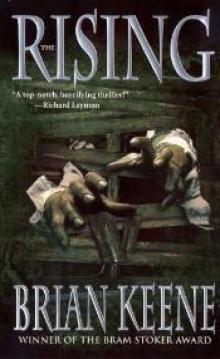 The Rising
The Rising Entombed
Entombed Take the Long Way Home
Take the Long Way Home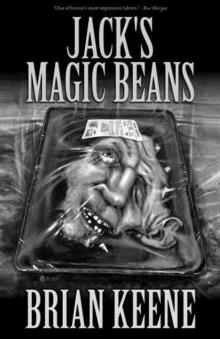 Jacks Magic Beans
Jacks Magic Beans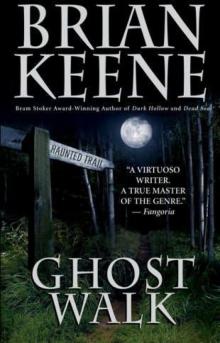 Ghost Walk
Ghost Walk An Occurrence in Crazy Bear Valley
An Occurrence in Crazy Bear Valley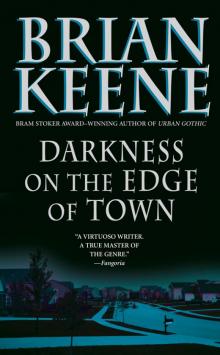 Darkness on the Edge of Town
Darkness on the Edge of Town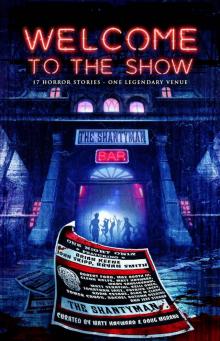 Welcome to the Show: 17 Horror Stories – One Legendary Venue
Welcome to the Show: 17 Horror Stories – One Legendary Venue Blood on the Page: The Complete Short Fiction of Brian Keene, Volume 1
Blood on the Page: The Complete Short Fiction of Brian Keene, Volume 1 Pressure
Pressure A Gathering of Crows
A Gathering of Crows The Rising: Selected Scenes From the End of the World
The Rising: Selected Scenes From the End of the World King of the Bastards
King of the Bastards Tequila's Sunrise
Tequila's Sunrise All Dark, All the Time
All Dark, All the Time Where We Live and Die
Where We Live and Die The Complex
The Complex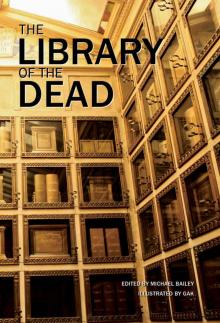 The Library of the Dead
The Library of the Dead The Conqueror Worms
The Conqueror Worms The Girl on the Glider
The Girl on the Glider Urban Gothic
Urban Gothic Kill Whitey
Kill Whitey Terminal
Terminal Castaways
Castaways